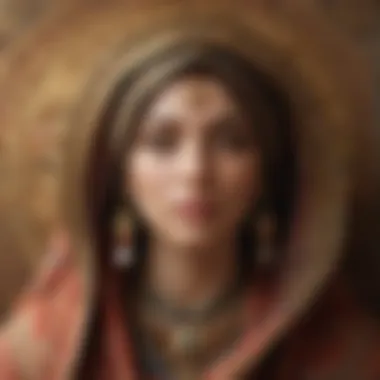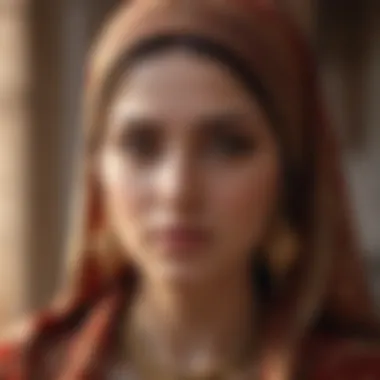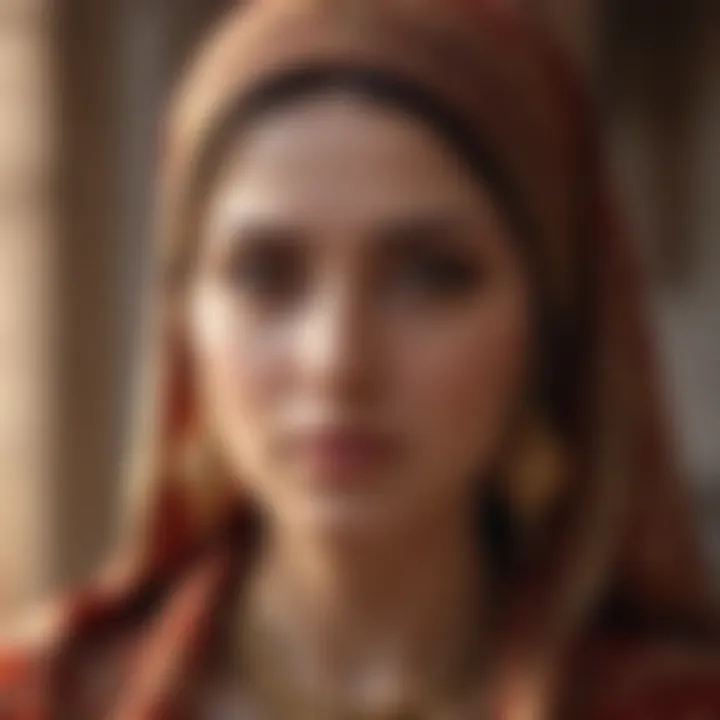Muslim Calendar 2021: Significance and Key Events


Intro
The Muslim calendar, also known as the Hijri calendar, is an essential aspect of Islamic culture and religious practice. It operates on a lunar system, which differs significantly from the solar-based Gregorian calendar that is widely used today. For many followers of Islam, understanding the calendar's structure and its various implications is key to engaging with the faith on a deeper level.
In this exploration, we will delve into the fundamental elements of the Muslim calendar as they relate specifically to the year 2021. We will discuss how significant months shape cultural and spiritual practices. Additionally, we will analyze how the Islamic calendar interacts with the Gregorian system and highlight key events that take place during the year. By the end of this article, readers should have a comprehensive grasp of the Muslim calendar's intricacies and its impact on the lives of its adherents.
Structure of the Muslim Calendar
The Muslim calendar consists of 12 months, including notable ones like Ramadan and Dhul-Hijjah. Each month lasts either 29 or 30 days, depending on the sighting of the moon. This lunar orientation means the Muslim year is shorter than the Gregorian year by about 11 days.
Key Months and Their Significance
- Muharram: The first month of the Islamic year, marking a time of reflection and remembrance.
- Ramadan: The ninth month, celebrated through fasting during daylight hours. It's a period for spiritual growth and self-discipline.
- Dhul-Hijjah: The last month of the Islamic calendar, during which the Hajj pilgrimage occurs.
Understanding these months provides insight into Islamic practices and the rhythm of life for Muslims throughout the year.
Cultural Observances in
In 2021, several significant events within the Muslim calendar hold particular importance.
- Eid al-Fitr: Celebrated at the end of Ramadan, this festival marks breaking the fast and is a time for communal prayers and feasting.
- Eid al-Adha: Occurring during Dhul-Hijjah, this festival commemorates the willingness of Ibrahim to sacrifice his son in obedience to God. It involves the sacrifice of an animal and distribution of meat to those in need.
The observance of these festivals plays a crucial role in fostering community bonds and spiritual connection among Muslims.
Interaction with the Gregorian Calendar
The relationship between the Muslim lunar calendar and the Gregorian calendar is complex, as dates vary each year. For example, in 2021, Ramadan began on April 12 and ended on May 11. The transition between calendars is vital for scheduling events and personal observances.
The understanding of the Islamic calendar system not only enriches spiritual lives but also facilitates dialogue and integration in culturally diverse settings.
As Muslims navigate daily life, their connection to the lunar calendar remains a significant aspect of their faith. This exploration of the Muslim calendar elucidates its depth and the cultural observances that define the Islamic year.
Prologue to the Muslim Calendar
The Muslim calendar, known as the Hijri or Islamic calendar, holds significant importance within the Islamic faith. It serves as a primary timekeeping system for Muslims around the world, influencing various spiritual observances and cultural practices. Understanding the Muslim calendar provides insight into the religious dynamics and traditions of the Muslim community, especially as they relate to rituals and festivities. This section of the article aims to elucidate the various aspects of the Muslim calendar, including its structure and key comparisons with the Gregorian calendar, which is used widely across the globe.
Understanding the Basics
The Muslim calendar is a lunar calendar consisting of twelve months in a year of 354 or 355 days. Each month begins when the sighting of the new moon is confirmed, which means the calendar is based on the moon's phases. Unlike the Gregorian calendar, which follows a solar-based system with fixed months and a total of 365 days, the Muslim calendar shifts throughout the seasons. This results in Islamic months rotating across all four seasons over several years. The first month of this calendar is Muharram, marking the start of the year, and the last is Dhu al-Hijjah, associated with the annual pilgrimage.
Muslims use this calendar primarily to determine the dates of religious celebrations such as Ramadan, Eid al-Fitr, and Eid al-Adha. These observances are critical, as they depend on accurate lunar calculations. Thus, knowledge about the Muslim calendar is not only vital for understanding the Islamic culture but also for engaging in daily practices aligned with the faith.
Comparison with the Gregorian Calendar
Comparing the Muslim calendar with the Gregorian calendar highlights stark differences in their foundations and implications for daily life. The Gregorian calendar is a solar calendar established by Pope Gregory XIII in 1582. It aims to keep the calendar year synchronized with the Earth's revolutions around the Sun. Conversely, the Muslim calendar is rooted in lunar cycles, which leads to significant variations in the number of days between the two systems.
One key difference is that the Gregorian calendar has a fixed number of days in each month, while the Muslim calendar months can vary between 29 to 30 days depending on lunar visibility. This discrepancy means that Islamic holidays and events occur on different Gregorian dates each yea. As a result, while certain holidays may be anchored in seasons like the summer or winter within the Gregorian framework, they shift annually in the Muslim calendar.
In summary, understanding the complexities of the Muslim calendar opens up a deeper awareness of the cultural context in which Muslims live and practice their faith. The relationship with the Gregorian calendar may pose challenges in synchronization, but it also highlights the unique characteristics of Islamic traditions.
“The understanding of the Muslim calendar extends beyond mere timekeeping; it enriches the comprehension of faith-based cultural practices and lifestyle.”
Structure of the Muslim Calendar


The structure of the Muslim calendar provides a vital framework for understanding Islamic timekeeping and related religious practices. Unlike the Gregorian calendar, which is solar, the Muslim calendar, also known as the Hijri calendar, is lunar. This fundamental difference leads to distinct cycles of months and years, and influences how Muslims organize their daily lives, religious observances, and cultural activities. Understanding this structural aspect is essential for exploring the deeper implications of the Muslim calendar on faith and life.
Lunar Months and Their Duration
The Muslim calendar comprises twelve lunar months, which are crucial to the Islamic faith. Each month lasts either 29 or 30 days, depending on the sighting of the moon, leading to a total year of 354 or 355 days. This variability adds a layer of nuance to the calendar, as the Islamic months shift forward approximately 10 to 12 days each year in relation to the Gregorian calendar.
The names of the lunar months are:
- Muharram
- Safar
- Rabi al-Awwal
- Rabi al-Thani
- Jumada al-Awwal
- Jumada al-Thani
- Rajab
- Sha'ban
- Ramadan
- Shawwal
- Dhu al-Qi'dah
- Dhu al-Hijjah
Each month holds its own significance and is marked by specific events and observances. For instance, Ramadan is widely recognized for fasting, whereas Hajj, pilgrimage to Mecca, mainly occurs during Dhu al-Hijjah. This structure provides a rhythm to the Islamic year, guiding adherents through periods of reflection, devotion, and celebration. The alignment of months with lunar cycles also signifies an ancient connection to celestial movements, reinforcing the calendar's spiritual resonance.
Significance of the Hijri Year
The Hijri year marks the migration of the Prophet Muhammad from Mecca to Medina in 622 CE. This event is not merely historical but represents a key turning point for the Muslim community. The Hijri calendar reflects a unique cultural and religious identity that binds Muslims across the globe.
Adopting the Hijri year for religious and ceremonial purposes holds deep implications. It fosters a sense of unity among Muslims, as the same date holds significance regardless of geographic differences. Moreover, the Hijri year influences various aspects of Islamic life:
- Religious observances
- Social gatherings
- Cultural events
As the Hijri year progresses, it creates opportunities for spiritual growth and communal experiences, emphasizing the importance of time in the Islamic faith. Its cyclical nature allows for resolutions and renewal, reinforcing the central themes of progression and reflection in the lives of Muslims.
The structure of the Muslim calendar is more than a means of tracking days; it's a comprehensive guide for spiritual living and community bonding.
Understanding both the lunar months and the significance of the Hijri year enriches one's appreciation of the Muslim calendar. This structure not only shapes individual practices but also weaves the collective fabric of Muslim society across diverse cultures.
Key Events in the Muslim Calendar for
The significance of the key events in the Muslim calendar is profound, influencing not only religious practices but also cultural life for millions of Muslims worldwide. Each event provides a unique opportunity for reflection, devotion, and communal ties, making them essential pillars within the year. Understanding these events enhances one’s appreciation of Islamic culture and spirituality, offering both adherents and observers insights into the diverse practices and beliefs prevalent in the Muslim community.
Important Religious Observances
In 2021, several key religious observances defined the Muslim calendar. One of the most significant events was Ramadan, the holy month of fasting. It was a period of self-discipline, worship, and community solidarity. Muslims fast from dawn until sunset, engaging in nightly prayers and reading the Quran. The conclusion of Ramadan is marked by Eid al-Fitr, a festive holiday celebrating the end of fasting. For many, this observance included communal prayers, sharing meals with family and friends, and providing charity to those in need.
Another crucial observance is the Day of Arafah, occurring during the annual pilgrimage of Hajj. This day holds substantial spiritual significance, as it is believed that sins are forgiven and prayers are accepted. Pilgrims gather at the plain of Arafah, seeking mercy through heartfelt supplication.
Additionally, the month of Dhu al-Hijjah marks the celebration of Eid al-Adha, known as the ‘Festival of Sacrifice.’ This event commemorates the willingness of Ibrahim (Abraham) to sacrifice his son in obedience to God. The occasion involves prayers, feasting, and the ritual sacrifice of an animal, emphasizing themes of obedience and charity.
Cultural Festivities
Cultural festivities surrounding the Muslim calendar in 2021 showcased the vibrant traditions upheld by different communities. Each celebration brings together families and friends, fostering unity and shared joy.
One example is Mawlid al-Nabi, the observance of the birth of the Prophet Muhammad. Different cultures have unique ways of celebrating this occasion. In various regions, people organize communal gatherings, recite poetry, and engage in discussions about the Prophet's life and teachings. This serves not only as a celebration of the Prophet but also a chance to reflect on the principles he exemplified.
On the other hand, Eid al-Fitr and Eid al-Adha bring together communities in remarkable ways. Families exchange gifts, prepare special meals, and participate in large prayer gatherings. The act of giving, particularly during Eid al-Fitr, reinforces the emphasis on charity within Islamic teachings.
Overall, these observances and festivities strengthen the bonds of faith and culture, highlighting the interconnectedness of religious practices and community identity. The key events in the Muslim calendar not only serve as reminders of faith but also encourage social cohesion among Muslims around the world.
“The calendar is not just a sequence of dates; it holds deep significance, representing the faith, culture, and unity of the Muslim community.”
Months of the Muslim Calendar
The organization of the Muslim calendar into twelve distinct lunar months is crucial not only for the understanding of Islamic timekeeping but also for the religious, cultural, and social practices that occur throughout the year. The significance of each month lies in the events, rituals, and observances tied to them. This section aims to elucidate the unique attributes of each month, illustrating their impacts and how they shape the lives of Muslims globally.
Muharram: The Month of Mourning


Muharram is considered one of the holiest months in the Islamic calendar. It marks the beginning of the new year. Observing fast during this month is recommended, especially on the day of Ashura, which commemorates the martyrdom of Imam Hussein, the grandson of the Prophet Muhammad. Many Muslims participate in mourning rituals to express grief for this pivotal event in Islamic history. This month is a time for reflection, a moment to ponder the significance of sacrifice and justice in the face of oppression.
Safar: Connotations and Beliefs
Safar carries its own unique beliefs. Some cultures perceive this month as unlucky, associating it with loss and hardship. Superstitions persist, and caution is advised by some communities during this time. However, for others, Safar is seen as a month of opportunity, used to foster resilience and determination. The interpretations of this month are varied, emphasizing the diverse views within the Muslim community.
Rabi al-Awwal: Celebrating the Prophet's Birth
Rabi al-Awwal is celebrated as the birth month of the Prophet Muhammad. This month is often marked by gatherings where the life and teachings of the Prophet are recounted. The days of this month serve as a reminder of his legacy and the importance of compassion, mercy, and service to humanity. Festivities vary from place to place, reflecting local cultural expressions of faith.
Ramadan: The Month of Fasting
Ramadan stands as the most revered month in the Muslim calendar, primarily due to the practice of fasting from dawn until sunset. This observance fosters spiritual growth, self-discipline, and empathy for the less fortunate. Nights during Ramadan hold particular importance, as worship intensifies, culminating in the celebration of Laylat al-Qadr, believed to be the night when the Quran was first revealed. Ramadan is not merely about abstaining from food; it is an opportunity for deep personal reflection and community bonding.
Shawwal: Celebrations and Reflections
Following the intense month of fasting, Shawwal begins with Eid al-Fitr celebrations. This festival marks the end of Ramadan and is a time for communal prayers, feasting, and giving to charity. Shawwal emphasizes maintaining the virtuous habits developed during Ramadan. It reminds the believers to sustain their spirituality beyond the month of fasting.
Dhu al-Qi'dah: Significance in Pilgrimage
Dhu al-Qi'dah is essential as it precedes Dhu al-Hijjah, the month of pilgrimage. During this month, many Muslims engage in preparatory acts leading to Hajj, one of the five pillars of Islam. Although it is not a month of obligatory rituals, travelers and pilgrims prepare for their journey, making it a time filled with anticipation and reflection on faith and devotion.
Dhu al-Hijjah: Pilgrimage and Eid al-Adha
Dhu al-Hijjah is a month that encapsulates profound religious significance. It is during this time that the Hajj pilgrimage takes place, drawing millions of Muslims to Mecca. The culmination of this month is marked by Eid al-Adha, a festival commemorating Abraham’s willingness to sacrifice his son in obedience to God’s command. Rituals include the sacrifice of an animal and distributing meat to the needy, reinforcing community ties and acts of charity.
The Muslim calendar is not just a measure of time; it reflects spiritual significance, cultural identity, and communal harmony.
By understanding these months, one gains insight into the spiritual rhythm of Islamic life and the societal roles these observances play within diverse communities. The Muslim calendar weaves together history, faith, and cultural heritage, allowing individuals to navigate their personal beliefs while being part of a larger community.
Interconnections Between Calendars
The interconnections between the Muslim calendar and the Gregorian calendar exemplify the complexities of timekeeping across cultures and religions. Understanding how these two systems relate can greatly enhance our appreciation for the significance of the Muslim calendar in various societal contexts. This section will explain the methods of converting dates and the broader implications of maintaining both calendars.
Converting Dates Between Calendars
Converting dates from the Muslim calendar to the Gregorian calendar—and vice versa—allows individuals to navigate both systems effectively. The Muslim calendar is strictly lunar, consisting of 354 or 355 days in a year. Since the Gregorian calendar has 365 or 366 days, this leads to a drift of about 10 to 12 days each year. This discrepancy affects how events are timed across cultures.
To convert a specific Muslim date to its Gregorian equivalent, several online calculators and tables exist. These tools incorporate mathematical formulas to account for the differences in month length and the lunar cycle. Alternatively, here is a simplified approach for manual conversion:
- Identify the current Hijri year and month.
- Multiply the Hijri year by 354 (average days in a Hijri year).
- Calculate the days passed in the current month.
- Add these to get the total number of days.
- Divide by 365 to find the Gregorian year.
Using this kind of calculation, you can determine important dates related to the Islamic practices, such as Ramadan, Eid al-Fitr, or the memorial observances in Muharram.
Implications of Dual Systems
The presence of both the Muslim calendar and the Gregorian calendar leads to various social and practical implications. For many Muslims, the Hijri calendar serves as a guide for religious observances. However, living in predominantly non-Muslim societies, individuals often rely on the Gregorian calendar for their professional and daily activities. This duality introduces unique challenges and opportunities in managing cultural identity.
Some key implications include:
- Cultural Awareness: Awareness of the Muslim calendar fosters understanding and tolerance in diverse societies.
- Planning: It is essential for individuals who observe religious practices, such as fasting during Ramadan, to effectively plan their work and social lives around these observances.
- Educational Integration: Schools serving Muslim communities increasingly address both calendars to accommodate students and families in their academic and festive celebrations.
The balance between these two timekeeping methods sheds light on the adaptability of cultures and religions, while reinforcing the need for inclusive practices in conscientious environments.


The ability to convert dates between the Muslim and Gregorian calendars demonstrates both the unique traditions of the Islamic faith and the modern world's interconnectedness.
In summary, understanding the interconnections between the Muslim calendar and the Gregorian calendar enhances our comprehension of time as a cultural construct and facilitates interactions among diverse populations.
Cultural Influence of the Muslim Calendar
The Muslim calendar, also known as the Hijri calendar, plays a significant role in shaping cultural, religious, and social practices among Muslim communities worldwide. It is not merely a method of marking time; it is intertwined with the spiritual and daily lives of Muslims, dictating observances, rituals, and celebrations throughout the year. Understanding this influence requires a closer examination of how the calendar affects daily life and the variations in practices around the globe.
Impacts on Daily Life
The Muslim calendar's lunar-based structure leads to fluctuations in the timing of important events and observances. This specificity affects various aspects of life including prayer times, fasting, and festivals. For instance, Ramadan, a month of fasting, may start on different days in different countries due to the sighting of the moon. Consequently, this affects the daily routines of millions during this period, encouraging communal gatherings for iftar, the meal to break the fast.
Practical Implications
- Fasting Practices: The month of Ramadan brings about a unique daily rhythm, as Muslims fast from dawn to sunset. This requires careful planning in terms of meal preparation and daily schedules.
- Religious Observances: Events such as Eid al-Fitr and Eid al-Adha are set according to the Islamic calendar and are pivotal moments for community bonding and charity.
- Business Operations: Many businesses may adjust their hours during Ramadan to accommodate the altered schedules of Muslim employees and customers, showcasing the calendar's influence on economic activities.
The significance of these impacts is profound, as they foster a sense of community and shared identity among Muslims globally, creating a collective rhythm in time management.
Global Variations and Practices
Different countries may implement the Islamic calendar in varied ways. For instance, countries with significant Muslim populations often have unique celebrations and observances that resonate with their local customs while remaining rooted in the Islamic tradition.
Cultural Differences
- Diversity in Celebration: The way Eid is celebrated can differ greatly between countries. In Indonesia, the celebrations may feature local cuisines and traditional clothing. In Turkey, a distinct cultural touch is reflected in their specific festivals.
- Integration with Local Traditions: In many regions, Islamic observances blend with indigenous cultural practices. For example, in West African nations, local music and dance may accompany religious festivals, creating a unique fusion of cultural expressions.
Challenges in Utilizing the Muslim Calendar
Understanding the challenges linked to the Muslim calendar is essential for both practitioners of the faith and those interested in its significance. While the lunar calendar is crucial in marking religious observances, it poses unique hurdles when compared to the more widely used Gregorian calendar. This section delves into two main areas: adaptation in non-Islamic societies and technological integration.
Adaptation in Non-Islamic Societies
The Muslim calendar, or Hijri calendar, primarily serves Islamic communities. However, its use in predominantly non-Islamic societies brings about several challenges. These challenges can stem from a lack of familiarity or understanding of the calendar's nuances among non-Muslims. The lunar year, being around 10 to 12 days shorter than the Gregorian year, affects how dates align. This misalignment can lead to confusion regarding the timing of significant Islamic events, such as Ramadan and Eid.
Additionally, many institutions, workplaces, and educational systems follow the Gregorian calendar. For Muslims in non-Islamic regions, this may result in conflicts when trying to observe important religious events alongside secular schedules. The significant cultural differences can lead to a lack of recognition of Muslim holidays, further complicating participation in community life.
To address this, cultural education and calendar awareness can be beneficial. Non-Islamic societies can implement better integration measures, allowing for a more inclusive understanding of Muslim observances. For example, schools can educate students about Ramadan to foster understanding and respect.
Technological Integration
In an increasingly digital world, technology is becoming pivotal in bridging gaps between different calendrical systems. Many digital platforms now offer tools for converting Islamic dates to Gregorian dates. This can simplify planning for important events and observances significantly. Mobile applications can also alert users about religious dates, enabling smoother transitions between the two systems.
However, the reliance on technology brings its own set of challenges. Not everyone has equal access to digital tools. Some older individuals or communities may still adhere to traditional practices, making it harder to adapt to digital etiquette or tools. Furthermore, software and applications may not always provide accurate conversions, leading to mistakes.
Adoption of features that facilitate user-friendly experiences can help ensure that everyone benefits equally from technological advancements. Collaboration between tech developers and community leaders can ensure that these tools accurately reflect Muslim calendars while also being accessible to all users.
“The intersection of the Muslim calendar with modern technology presents opportunities and challenges. It is crucial to ensure inclusivity in its utilization.”
The End
The relevance of the Muslim calendar in today’s context reflects a tapestry of cultural, religious, and social significance that extends far beyond its function as a timekeeping system. This article highlights several key elements concerning its ongoing importance amidst the global community.
The Relevance of the Muslim Calendar Today
The Muslim calendar, known as the Hijri calendar, is rooted in historical and spiritual contexts. As a lunar calendar, it marks important religious observances and cultural events that continue to shape the identities of Muslim communities worldwide. Here are several facets demonstrating its significance today:
- Religious Observance: The cyclical nature of the Islamic months allows for the observance of key events such as Ramadan and Eid al-Adha, making the calendar essential for spiritual practices.
- Cultural Continuity: Festivals and commemorations linked to the Muslim calendar foster a sense of belonging among Muslims. Events like Mawlid, celebrating the Prophet Muhammad's birth, and Ashura, which honors the martyrdom of Husayn ibn Ali, play critical roles in communal life.
- Social Dynamics: Understanding the Muslim calendar is vital for interfaith dialogue and communication. It helps foster mutual respect and acknowledgment among diverse cultures and religions, especially in multicultural societies.
- Astrological Significance: Astrologers and esotericists often draw connections between lunar cycles and human behavior. The phases of the moon within the calendar can influence timing for important personal and communal decisions.
- Global Integration: The interaction between the Muslim and Gregorian calendars illustrates globalization's effect. Many institutions and businesses operate by leveraging both calendars, reflecting a shared need for coordination in an interconnected world.
Ultimately, the Muslim calendar serves not just as a measurement of time, but as a framework within which spiritual lives unfold, cultural legacies persist, and communities thrive.
A profound understanding of the Muslim calendar offers insights into the lives of millions. It is more than a calendar; it is a vital part of the identity and heritage of its followers. The exploration of its nuances fosters a greater appreciation for the intricate relationship between time, faith, and culture.







